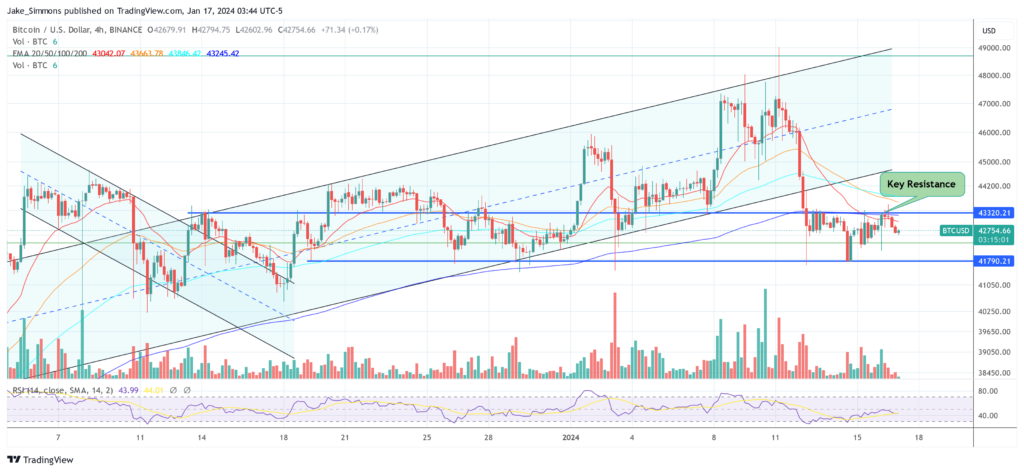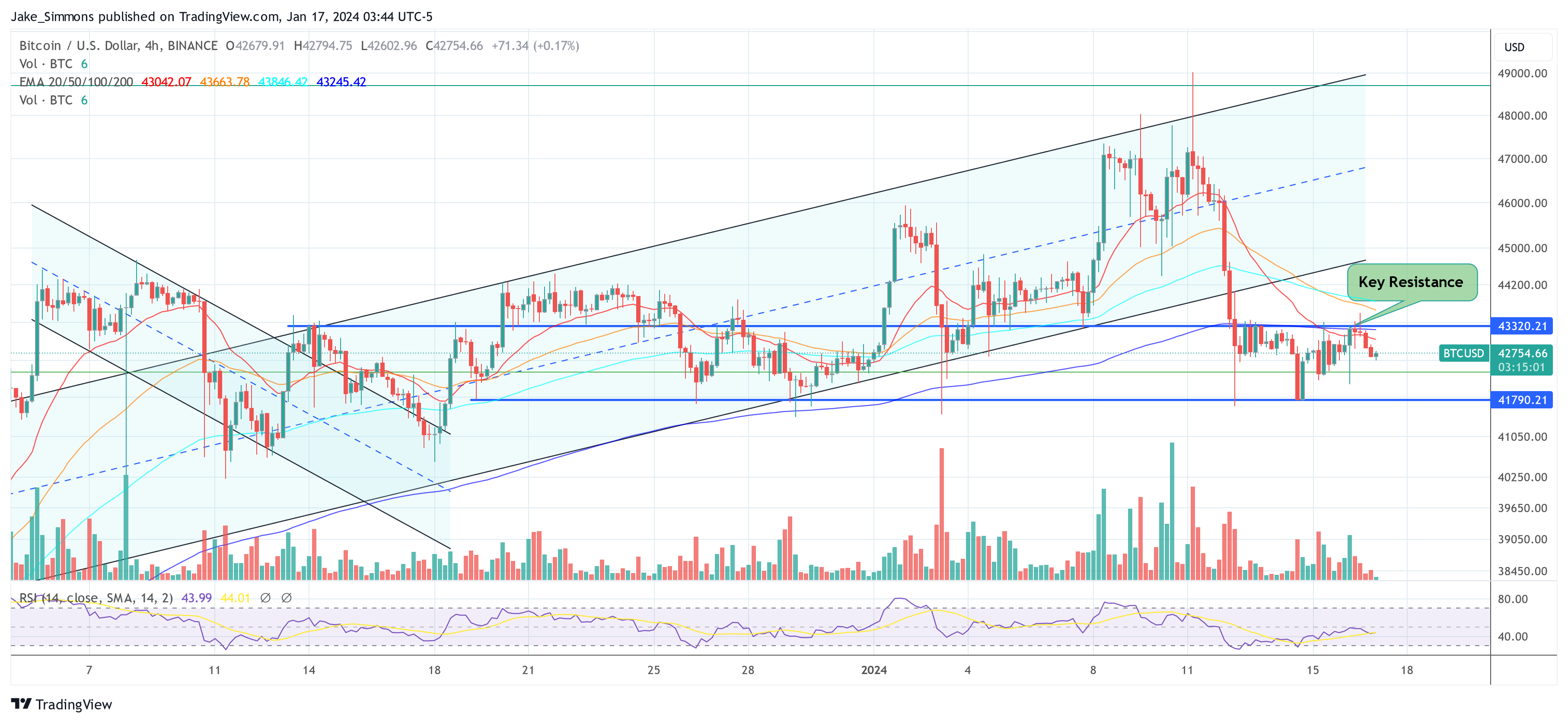Bitcoin’s Prime Trading Hour Has Emerged

“`html
A significant change is unfolding in the cryptocurrency trading arena as the United States welcomes the arrival of spot Bitcoin ETFs. Notably, a report by Bloomberg’s James Seyffart showcased that these ETFs amassed nearly $10 billion in trading volume within their initial three days of operation.
Leading the charge was Grayscale’s GBTC, which saw $5.174 billion in trades, followed by BlackRock’s IBIT at $1.997 billion, and Fidelity’s FBTC at $1.479 billion. Together, they accounted for a combined trading volume close to $9.771 billion.
Here’s the latest on the #Bitcoin ETF scene. The US spot ETFs saw nearly $10 billion in trades over three days. Stay tuned for more updates on flows and assets. pic.twitter.com/OnpCshjYJP
— James Seyffart (@JSeyff) January 16, 2024
Despite these high trading volumes, Bitcoin’s price has not seen commensurate growth, with experts linking this to a shift in Grayscale’s GBTC positioning. Its clients are increasingly moving their funds to more competitively priced alternatives, as some spot BTC ETFs offer lower fees around 0.25%.
These investor movements are somewhat constrained by the SEC’s mandated cash-redemption process, causing a delay between cashing out of one investment and channeling funds into another.
Deciphering Grayscale’s Influence on Bitcoin’s Price
The mechanism by which GBTC operates, not allowing for immediate cash redemptions and adhering to a T+2 or T+1 settlement cycle, is creating recognizable market tendencies. Alex Thorn from Galaxy Digital highlighted a notable pattern of increased Bitcoin trading in US market hours, particularly during the ETF fix hour towards the close of trading.
There’s a noticeable uptick in Bitcoin trade activity within US hours, primarily from 3-4pm NY time linked to the ETF fix, culminating in what’s becoming a predictable end-of-day Grayscale sell-off. The market dynamics are certainly evolving.
Similarly, Daan Crypto Trades pointed out Grayscale’s routine Bitcoin transfers to Coinbase pre-market open as a potential indicator of GBTC’s outflows, noting significant amounts being moved on specific days.
Authenticating these market movements, Maartunn from CryptoQuant commented on the clear outflow of Bitcoin from Grayscale to Coinbase, correlating it to shifts in the Coinbase Premium Gap and indicative selling pressure.
James Van Straten, another crypto analyst, supported this view, pointing out a pattern in Grayscale’s handling of redemptions which aligns with market opening times, suggesting an adjustment in the prime market hour for Bitcoin trading.
While these ‘Grayscale effects’ reshape the market timing, they are unlikely to be a permanent fixture but do exert an influence on Bitcoin’s pricing for the time being. With Grayscale reported to hold an immense amount of Bitcoin, closely watching their flow could be key to understanding price trajectories. At the moment of reporting, Bitcoin’s price hovered at $42,754.

Image from DALL·E 3 with chart attributed to TradingView.com
“`
Source link
#Bitcoin #Prime #Trading #Hour






